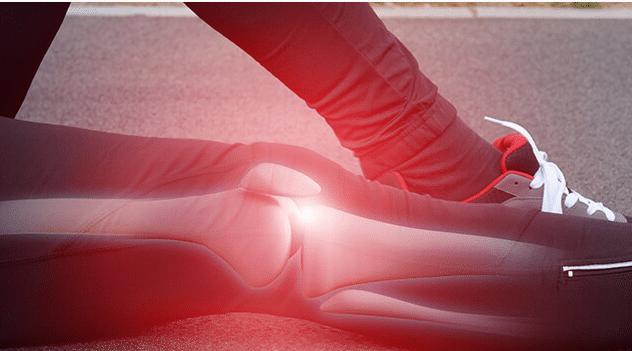Excellent Tips For Preventing and Treating Runner’s Knee

Runner’s knee, which affects athletes especially runners across the globe, is nothing but a term that describes the pain around the kneecap. Also known as patellofemoral pain syndrome, it occurs due to problems like overuse of the knees, injury, and improper alignment of bones between your hips and ankles.
Runner’s knee is not only common among athletes, but it can affect anyone who performs intense physical activities like running and jumping on a daily basis.
Here are some of those conditions that lead to pain around the kneecap
- Iliotibial band syndrome
- Patellofemoral malalignment
- Anterior knee pain syndrome
- Chondromalacia patella
- A fractured kneecap
- Chronic diseases like Arthritis
Most people think that runner’s knee is a specific problem, which is incorrect. In layman’s terms, it’s a pain that stems from knee problems.
So, if you are someone, who keeps on bending their knees frequently while carrying out their daily activities or you perform high-stress moves during your workout sessions, then you may also end up struggling with runner’s knee in the future.
Although, when you hear the name of this problem, it looks like it is a kind of pain that stems only from running; however, that is not correct. The fact is any physical activity that puts excessive stress on the knee joint can lead to runner’s knee.
Common Symptoms of Runner’s Knee
- A dull pain around the kneecap
- A pain that worsens while walking and running
- A pain that aggravates while climbing stairs
- A pain that intensifies while standing up from a seated position
- A pain that magnifies after prolonged sitting
Runner’s knee can prevent you from enjoying your favorite activities; therefore, it’s tremendously significant that you take utmost care of your knees. One of the best ways to do that is to focus on strengthening them so that they can easily resist the stress that physical activities put on them.
Ways of Preventing Runner’s Knee
1. Shed Those Extra Pounds
There is little doubt that overweight people remain at the high risk of runner’s knee; therefore, if you think that your weight is little more than what it should be, then you must take concrete steps to lose it. However, if you fail to do that, it will not only make you vulnerable to runner’s knee but will also increase the risk of conditions like osteoarthritis, gout, diabetes, high blood pressure, and breathing problems like asthma.
Besides, people with overweight also remain at a higher risk of different types of cancers. According to The New York Times, “American adults continue to put on the pounds. New data shows that nearly 40 percent of them were obese in 2015 and 2016, a sharp increase from a decade earlier, federal health officials reported Friday.“
It further says, “According to the latest data, published Friday in JAMA, 7.7 percent of American adults were severely obese in the same period.”
So, if you want to stay away from the conditions linked to obesity, make sure that you take proactive steps to reduce your weight.
2. Stick To Warm-Ups
It’s highly essential to perform warm-ups and specific moves that strengthen flexibility and prepare your body for intense physical activities at the beginning of your workout sessions. A 5-to-6 minute’s warm-up session is enough to get your body ready for long runs.
3. Seek The Help of A Trainer
Professional athletes should always workout under the guidance of a skilled and experienced trainer. Your trainer will teach you specific moves based on your profession, which will not only increase your fitness level but will also enhance your productivity. It will also reduce the risk of knee, hip, and ankle injuries.
The best part is that your trainer keeps on motivating you regularly, which prevents you from missing your workout sessions.
4. Use The Right Running & Workout Shoes
One of the best ways to prevent runner’s knee is to use the right running and workout shoes that come with proper support. Proper shoes can save you from several other running injuries, which can reduce your performance.
When you struggle with running injury, it keeps you from attending your practice sessions, which not only affects your performance but also snatches your mental peace. So, if you want to enhance your efficiency, make sure that you use the correct running and workout shoes.
5. Strengthen Your Muscles
Having strong muscles eventually helps in maintaining a healthy body, which plays a crucial role in preventing injuries and illnesses. You can perform specific moves to strengthen your thigh and core muscles, to prevent sports injuries like runner’s knee.
Apart from that, make sure that you avoid running on hard surfaces.
Treatment For Runner’s Knee
1. Seek Physical Therapy
One of the best ways to treat runner’s knee is to seek physical therapy. It’s a non-invasive and drug-free method of relieving the pain around your kneecap and healing injury.
According to James River Physical Therapy, ” When you have a bone injury during a game or workout, a trip to the emergency room usually results in a cast to promote healing. But as your bone is recovering, the muscles around it are weakening. Physical therapy helps to strengthen the affected area following a fracture.”
So, when you consult a physical therapist, they will examine the condition of your knee and its ability to function before designing a personalized care plan to meet your specific needs. They will check your range of motion to arrive at a diagnosis, apart from your examining your medical history.
After that, they will use the best physical therapy techniques like dry needling, Kinesiotaping, and cold laser therapy, etc., to relieve your pain and improve the healing process.
All these treatments help in enhancing the body’s natural healing process by addressing the affected muscles, tendons, ligaments, joints, and bones, etc. All these physical therapy techniques help in enhancing blood flow to the injured area, which eventually accelerates the healing process.
Physical therapy is beneficial for treating all sorts of injuries that a person receives either while performing workouts or while playing a game.


